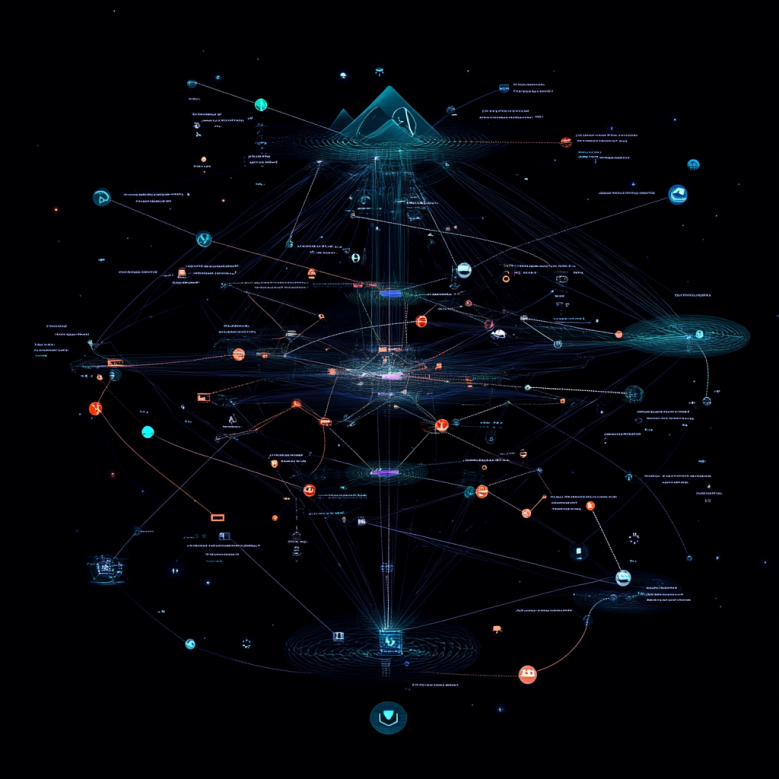Polkadot’s Groundbreaking JAM Upgrade: A New Era for Blockchain Flexibility and Efficiency
Polkadot, a leading figure in the blockchain arena, will undergo its most significant transformation since its inception in 2021. The forthcoming Join Accumulate Machine (JAM) upgrade, announced in April 2024, promises to revolutionize the Polkadot network by introducing profound modifications to its core architecture, the Relay Chain. Polkadot’s creator Gavin Wood detailed this upgrade in the JAM Gray Paper, marking a pivotal evolution in the network’s functionality and strategic direction.
Understanding JAM’s Core Innovations
The essence of the JAM upgrade lies in its redefinition of the Relay Chain, transitioning to a more modular and minimalistic framework. This new structure is designed to enhance the flexibility and scalability of the network, allowing it to support a broader range of applications and services seamlessly.
One of the standout features of JAM is its permissionless nature, which simplifies the process for developers to build and deploy services. This is a significant shift from the current model that requires developers to secure parachain slots through a competitive auction process. The new model fosters an inclusive environment where innovation can thrive without financial barriers.
JAM also introduces the concept of Agile Coretime, which allows users to purchase computational resources in bulk and resell them in parts. This could lead to more efficient use of resources and potentially lower costs for developers.
The Technical Backbone: Polkadot Virtual Machine and RISC-V
The technical execution of JAM will be powered by the Polkadot Virtual Machine (PVM), utilizing the RISC-V architecture. RISC-V is known for its open-source flexibility and is widely used by major tech entities like Google and Nvidia. This choice underpins Polkadot’s commitment to building a robust and adaptable infrastructure.
The operational testing of this new framework will take place in the “Polkadot Palace,” a supercomputer based in Lisbon, Portugal. This facility boasts impressive specifications, including over 12,000 cores and 16 TB of RAM, ensuring it can handle the extensive demands of the JAM network.
Strategic Benefits of JAM for the Polkadot Ecosystem
Gavin Wood’s vision for Polkadot’s JAM Upgrade extends beyond technical enhancements; it aims to democratize the development landscape on Polkadot. By removing the auction-based system for parachain slots, JAM lowers the entry barriers for new projects, fostering a more vibrant and diverse ecosystem.
The new architecture also promises significant improvements in data processing capabilities, with potential speeds up to 42 times faster than the current Polkadot network. This could be a game-changer for applications requiring high throughput and speed.
Furthermore, the shift to a more service-oriented model could lead to new use cases and innovations within the Polkadot ecosystem, potentially attracting a new wave of developers and entrepreneurs.
Timeline and Transition
The rollout of JAM will follow a meticulous process, projecting a timeline of 20 to 60 months to reach full operational capacity. Unlike previous updates, the team will implement JAM in a single comprehensive update, signifying a major leap forward for the network.
For current DOT token holders and traders, this transition will proceed smoothly, with no new tokens or altcoins created as a result of the upgrade. This approach ensures stability and continuity for existing investors.
Continued Relevance of Parachains
Despite the shift towards a more flexible framework, existing parachains will continue to operate without disruption. The JAM upgrade includes provisions for backward compatibility, thus ensuring that current applications will not become obsolete. Instead, parachains will coexist with new services, ultimately enriching the Polkadot ecosystem with a wider array of options.
Opportunities for Developers
The Web3 Foundation is keen to support developers transitioning to or starting with the JAM framework. A significant incentive in place is the JAM Implementer’s Prize, which offers substantial rewards for teams that meet specific performance benchmarks. This initiative not only encourages participation but also promotes diversity in programming approaches beyond the commonly used Solidity, including languages like OCaml, Go, and Zig.
For developers interested in exploring the possibilities within the JAM ecosystem, early sign-ups and more information are readily available through the Web3 Foundation’s channels.
As Polkadot continues to evolve with the JAM upgrade, it reaffirms its position at the forefront of blockchain innovation, consequently offering new levels of efficiency, flexibility, and accessibility. Thus, this development not only enhances the capabilities of the Polkadot network but also ultimately sets a new standard for blockchain technology as a whole.
For further insights into blockchain development and recruitment trends, consider exploring additional resources such as Blockchain Recruitment and Web3 Recruitment.




